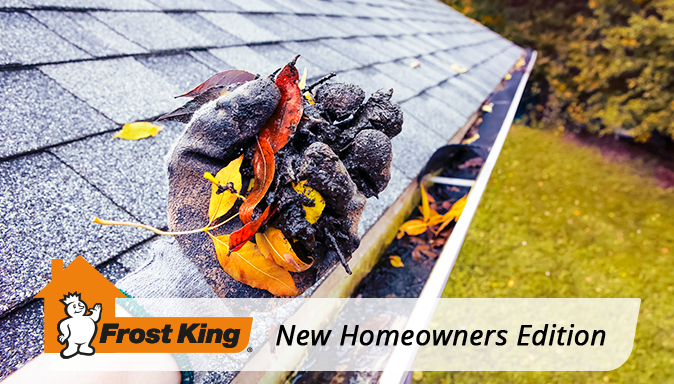Spooky, scary Halloween might be the highlight of October, but know what’s really scary? The unseen dangers lurking in your new home that you don’t know—or think—about. Use this month to do a safety check of the danger zones in your house that can cause major damage if you let maintenance slide.
Test Smoke and CO2 Detectors
The Consumer Products Safety Commission (CPSC) reports that some 2,000 people die in residential fires every year—and about two-thirds of those fires happen in homes that don’t have smoke alarms or where the smoke alarms are not working as they should. A properly installed, maintained smoke and CO2 detector is your best defense against a fire or carbon monoxide leak that could badly damage your home or even badly injure or kill you and your loved ones. If you aren’t already, start testing them once a month to make sure they are working properly.
Ideally, you should have a smoke alarm on every level of your home, outside of sleeping areas, and in each bedroom, and a CO2 detector on each floor. Carefully follow the manufacturer’s directions for installation. Typically, alarms should be placed in the center of the ceiling or high up on a wall near the ceiling.
Wondering what kind of detector to buy? Newer models are available that are interconnected, so if one of the alarms in your homes detects smoke or carbon monoxide all of the alarms will sound. Alarms that are hardwired into your home’s wiring are available, but be aware that they will not work during a power failure. Battery-operated detectors are easier to install and will work when the power is out; if you go this route, just be aware that some have a built-in battery that lasts the life of the unit while others use batteries that must be replaced annually. If you have detectors with batteries that need to be replaced, install fresh batteries this month and make a note in your calendar to change them again in October 2022.
Lastly, check the age of your detectors. Smoke alarms should be replaced every 10 years and CO2 detectors need to be replaced every five years.
Clean Out the Dryer Vent
According to FEMA, dryer fires cause an estimated $35 million in property damage every year—and one-third of these fires are caused by failure to clean the dryer. Fortunately, it’s very easy to keep your dryer running safely.
To protect your home from this avoidable tragedy, clean the lint screen every time you use your dryer to make sure air is able to flow properly through the unit and stop dangerous heat build up. But inevitably, some lint will sneak past the lint filter and build up in the duct that vents your dryer outside. If your clothes are taking a longer than usual time to dry, a clog in the ductwork may be the problem. Unplug the dryer, disconnect the duct and clean it out. You should do this at least once a year—and more frequently if you have a large household or do a lot of laundry.
In addition to cleaning the duct, you should also check the outside vent to make sure it’s not clogged and that it opens and closes properly. If the vent cover is missing, replace it or you may end up with a vent full or water, dirt, or unwelcome pests.
Check Fire Extinguishers (or Go Out and Buy One!)
While we’re talking house fires, do you have a fire extinguisher? Ideally you should have at least one on every floor—including the basement and the attic—and every member of your household should know where it’s kept.
If buying a fire extinguisher is one of those things you just haven’t gotten around to, now is the time to buy one. And did you know that fire extinguishers can expire? Make it a point to check that the pressure indicator on your fire extinguisher points to “full”, and if your unit is 12 years old it’s time to replace it.
Time for a Gutter Check
Fire’s polar opposite, water can also be an enemy to your home that causes pricey damage. That’s why it pays to prep your gutters before winter storms hit. Gutters channel water away from your roof and away from your home’s foundation. Without them, water could easily make its way into your home.
Make sure your gutters are up to the task by giving them a good cleaning before winter hits. Leaves, dirt and debris can collect in your gutter system and form clogs that keep water from flowing. This can cause water from melted snow and ice to back up onto your roof and form ice dams that damage shingles. Frost King has a line of gutter accessories that make it easier to clean out gutters and gutter guards and screens that you can install after cleaning to keep out future debris.
If you’ve had issues with ice dams in the past, you may want to install a Roof Cable Kit to protect your roof this winter. They work by heating ice and snow to keep water flowing through gutters and downspouts—even in frigid temperatures. Watch this video for simple step-by-step directions before starting:
